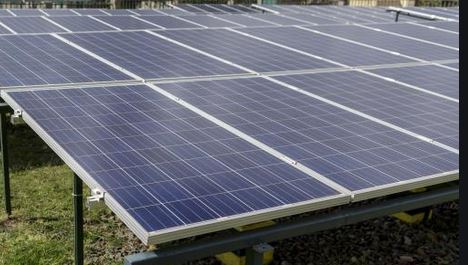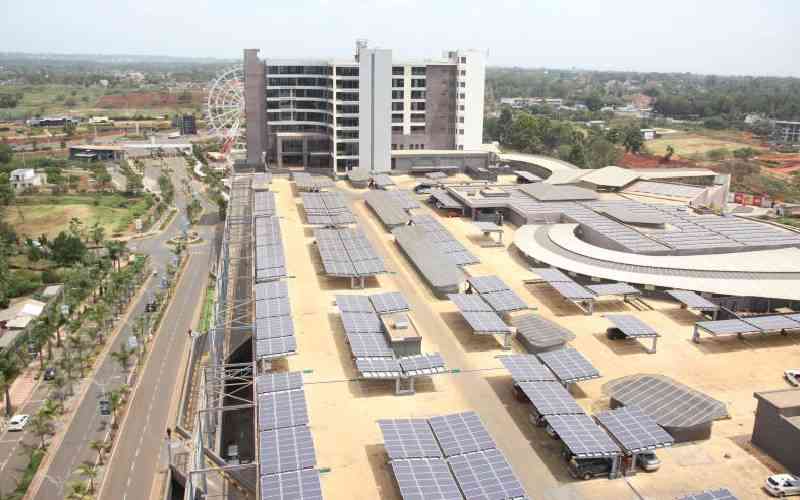
Over the past decade, the uptake of solar PV technologies in Kenya, and across most countries in Africa, has moved from predominantly donor-based models of service provision towards market-based diffusion models.
This has seen an increased uptake of solar PV from picosolar lanterns in many homes in Kenya. Nowadays it is very common to see solar homes systems and mini-grids roof-top installations for commercial and industrial consumers and utility scale installations.
The emerging new sector has led to the development of a whole new industry. It has also created new jobs in the sector. And the re-emergence of micro, small and medium sized enterprises (MSMEs) in the areas of installation, product distribution, service provision, engineering, procurement and contracting, subcontracting. And also, development in domestic renewable energy industries.
According to a Frankfurt School-UNEP report, in 2018, the Kenya attracted an impressive Sh145 billion worth of investments in the renewable energy sector split between geothermal (Sh50.4bn), wind (Sh49.4bn), and solar (Sh48.5bn).
This is because clean energy transitions in emerging economies have proved to have potential in solving societal challenges like lack of access to electricity and lack of stable grid-supply for the manufacturing sector.
Studies have proved that maximising on the local benefits from clean transitions is crucial for host countries to achieve development goals and to sustain long-term commitment to low carbon development pathways.
With the right support structures for local MSMEs, strengthening of local capabilities, and creating collaboration to attract investments in local companies, the renewable energy sector can play a critical role in boosting the domestic industry.
The development of renewable energy with the broader aim of socio-economic development is dependent on strategic collaboration and coordination among a range of key stakeholders including government, private actors and supportive institutions like financiers and researchers. It is also dependent on combined efforts from government including alignment of energy policy and industrial policy and streamlining of regulations.
In this regard, UNEP DTU Partnership, in partnership with Strathmore University Energy Research Centre (SERC), is working with a range of Kenyan stakeholders to generate specific market insights and facilitate sector dialogue. And exploring how challenges and bottlenecks specific to domestic firms can be reduced. This is being done through a three-year project titled Technology, Markets and Investment for Low Carbon and Climate Resilient Development (TEMARIN). It is the first comprehensive study on domestic SMEs in the solar sector, on their growth trajectories, competitiveness and their challenges.
Earlier this month, the project released a report with insights on the captive solar PV market in the commercial and industrial sector in Kenya, which shows an impressive growth from a few installed projects in 2010 to 40 MW capacity installations by late 2019.
This market segment sees a large participation of Kenyan SMEs.
Currently, the solar PV sector and technological advances development is being driven by private solar firms and facilitated by international financiers and national regulations. The market penetration is global in nature and is largely dependent on international linkages whether it be in terms of hardware, finance or knowledge.
The panels and other components are also being imported from China, Europe or US. And financing of projects often comes through international partnerships and depending on market segment international expertise is often involved in project design and implementation as well as, in some cases, the phase of installation and maintenance.
The solar PV industry thus holds important promise - not only in terms of promoting sustained economic growth for the people getting access to electricity and through continued green industrialisation by supporting higher productivity among industries (through captive solar PV). But also, through formal job creation and local enterprise development for solar PV businesses.
While the global integration of solar PV value chains is critical, the high penetration rates of solar PV in Kenya and the anticipated future growth of the solar PV market has the potential of opening up the questions of how the local economy and domestic enterprises can maximise benefits from this transition. And how they can better capture the value created from investments into the sector.
Stay informed. Subscribe to our newsletter
This issue has gained renewed relevance in the light of COVID-19 where the sector as a whole and domestic firm in particular are hard hit by the consequences of the global crisis.
Over the coming months, further deep-dive research is to focus on the strategies pursued by the Kenyan firm and the challenges and opportunities they face.
The findings will be shared and discussed with relevant stakeholders to identify concrete activities and initiatives that can remove specific bottlenecks and help maximise benefits for domestic SMEs in this market.
Mathilde Brix Pedersen, Researcher, UNEP DTU Partnership, and Sarah Odera, Ag. Director, Strathmore Energy Research Centre.
 The Standard Group Plc is a
multi-media organization with investments in media platforms spanning newspaper
print operations, television, radio broadcasting, digital and online services. The
Standard Group is recognized as a leading multi-media house in Kenya with a key
influence in matters of national and international interest.
The Standard Group Plc is a
multi-media organization with investments in media platforms spanning newspaper
print operations, television, radio broadcasting, digital and online services. The
Standard Group is recognized as a leading multi-media house in Kenya with a key
influence in matters of national and international interest.
 The Standard Group Plc is a
multi-media organization with investments in media platforms spanning newspaper
print operations, television, radio broadcasting, digital and online services. The
Standard Group is recognized as a leading multi-media house in Kenya with a key
influence in matters of national and international interest.
The Standard Group Plc is a
multi-media organization with investments in media platforms spanning newspaper
print operations, television, radio broadcasting, digital and online services. The
Standard Group is recognized as a leading multi-media house in Kenya with a key
influence in matters of national and international interest.






